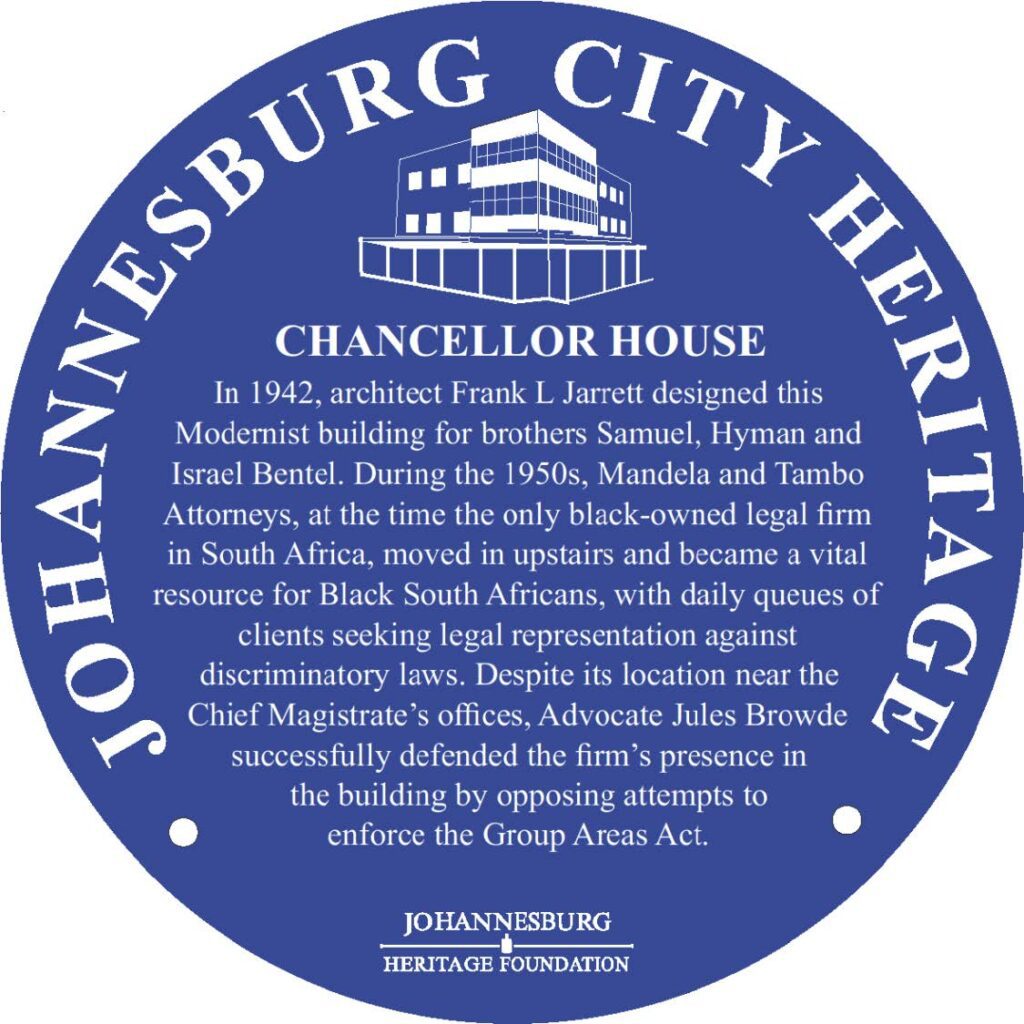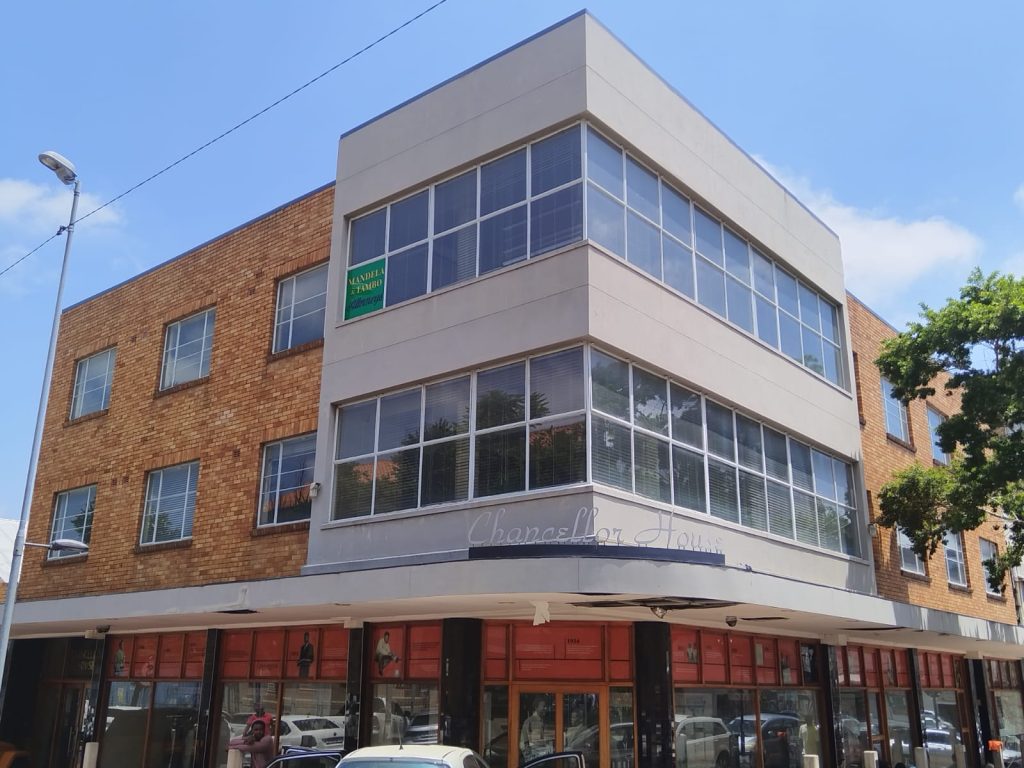Photo courtesy: Kabelo Mokoena ( Sunday Times)
A three-story corner building opposite the Magistrates’ Court, Chancellor House is a modernist office-building in face-brick. The former offices of Mandela and Tambo have been preserved on the 3rd Floor.
Wrapping around the large outside windows on the ground floor is an exhibition on Chancellor House and its people, for passers-by to view. Rare photographs, secret police documents and other archival material about the legendary law practice are some to the highlights of the exhibition.
Across the road, and linking with Chancellor House, is the Shadowboxer steel sculpture by Marco Cianfanelli, depicting Nelson Mandela as a boxer.
Built in the early 1940s, Chancellor House was one of the few buildings in downtown Johannesburg where black people could rent offices, thanks to the Essa family, the amenable Indian owners. Kosi’s Café occupied the ground floor of the building, and was one of the few places where black and white customers could mingle freely.
During the 1950s, Mandela and Tambo Attorneys, at the time the only black-owned legal firm in South Africa, moved in upstairs and became a vital resource for Black South Africans seeking justice under apartheid, with daily queues of clients needing representation against discriminatory laws.
In his autobiography, Long Walk to Freedom, Nelson Mandela writes:
“We were not only African lawyers in South Africa, but we were the only firm of African lawyers. For Africans, we were the firm of first choice and last resort. To reach our offices each morning, we had to move through a crowd of people in the corridors, on the stairs, and in the small waiting room … Every day we heard and saw the thousands of humiliations that ordinary Africans confronted every day of their lives”.
From these offices, across the road from the Magistrate’s Court, Mandela and Tambo challenged apartheid laws, backed in later years by a team that included Duma Nokwe, Ruth Mompati, Mendi Msimang, Godfrey Pitje and others. Their law office stayed open until 1960 when O.R. Tambo left South Africa to head the ANC’s External Mission.
Over the decade 2000-2010, the privately-owned building was occupied by homeless people. The site suffered fire damage, fell into massive decline, and was reduced to ruins.
In a move which saved the building, Chancellor House was then expropriated by Council for use as a heritage site, and some 68 homeless people were relocated to a shelter. By 2011, the structure was successfully rehabilitated by the City in a project implemented by the Johannesburg Development Agency (JDA) at a cost of R 10 Million.
After standing vacant for many years, By 2025, Chancellor House was allocated by the Joburg Property Company for office use to the City Dept. of Community Development, which oversees the City’s Arts, Culture and Heritage Services. To prepare the building for re-use, Community Development assigned a R 2 million budget and appointed the Johannesburg Development Agency (JDA) as the implementing agency to carry out repairs and re-fitting of the building, and to ensure compliance with building and safety requirements

Provisional Heritage Declaration under Section 29 of the National heritage resources Act (NHRA), 1999. Provincial Gazette Extraordinary, Vol 17 No, 247, 24 October 2011.

A culmination of research gathered over many years, the Online Johannesburg Heritage Register is being launched on Nelson Mandela Day 18 July 2025.
Among the many heritage sites featured is Chancellor House, the downtown offices of Mandela and Tambo Attorneys in the 1950s. After having been vacant and shuttered for more than a decade, this iconic building is being revived and brought to life once again as offices for the Community Development Department, which oversees the City’s Arts, Culture & Heritage Services.